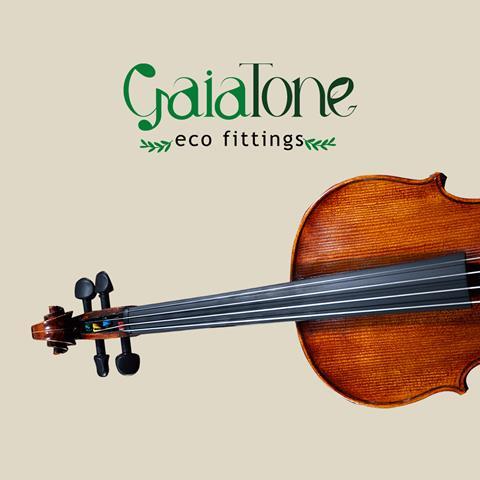Find out how GaiaTone offers a sustainable and environmentally friendly alternative to ebony fingerboards

Artists search for the perfect aesthetic whether in music, art, sculpture or design and the violin craft is often hailed as a pinnacle success in both its architecture and performance. Every aspect of a violin represents the merger of form and function; everything about the violin is designed to build strength to the artifact or enhance tone while delivering a visual beauty that captures the imagination.
The ebony fingerboard reflects this aesthetic, but it didn’t always! Originally, in the Baroque era, the fingerboard was made of woods available to the European makers, but travels to distant lands, brought back ebony, or black wood, that became de rigeur in violin making. The black colour diverged from traditions of the past, and became the standard.
But this standard is being challenged. Climate change is not just nudging, but shoving the music industry towards sustainably sourced wood species in an effort to curb the impact on our environment. International laws and regulations like the Lacey Act and EU Deforestation Regulations encourage systemic shifts throughout supply chains for the entire wood industry to sustainable sourcing. The letters FSC and SFI certify everything from toilet paper to lumber as sustainably sourced, milled and delivered for the end consumers. GaiaTone is the latest product to help string instrument makers and musicians meet increasing demand for sustainability in our music.
Let’s briefly recap the challenges with ‘ebony’ and sustainability. The word ebony as we use it refers to a range of tropical hardwood trees which sometimes have a dense, black core we use for fingerboards and other parts. Roughly 10 per cent of the trees harvested have the strength, density, colour and hardness we require for fingerboards. It is not a single species and virtually every known source falls somewhere on the spectrum from ‘threatened’ to ‘endangered’ to “extinct. There are strong opportunities to create sustainable sources in countries like Madagascar, but they will take time, likely decades, to establish. Sophisticated, systemic illegal logging practices make the labelling of ebony suspect. New European regulations and the recent Lacey Act case settlements may place us out of compliance with ebony parts.

GaiaTone offers a strong alternative to ebony and satisfies trade restrictions and sourcing challenges created by the climate change initiatives. The material is certified by the Forest Stewardship Council (FSC). 100 per cent post-consumer, recycled paper is compressed and bound into sheets using a natural, non-petroleum, resin binder. The physical characteristics – density, strength, and hardness work well for fingerboards, tailpieces and chinrests. The sheets of material lend themselves to more efficient manufacturing processes. This provides a market alternative priced closer to what we associate with ebony and accessible for the student and professional instrument markets. Like other paper products, the colour is easily controlled. The classic black is virtually indistinguishable from ebony. Other colour options offer fun alternatives including green, blue, brown and red.
In compliance with European Union regulations, the GaiaTone base material has an Environmental Product Declaration that includes a Life Cycle assessment of the overall environmental impact. The ’cradle to grave’ report studies global warming impact, ozone layer depletion, and depletion potential for fossil resources. The report quantifies the Global Warming Potential (GWP) of GaiaTone’s base material, including raw material acquisition, construction and disposal. Unlike raw ebony, which involves intense transportation, deforestation, milling, GaiaTone’s global warming impact is objectively very low and is further enhanced by its use of non-virgin materials: postconsumer paper waste.
Introducing new materials creates new challenges. For luthiers, GaiaTone’s density and hardness will provide a long-lasting fingerboard that requires little dressing and maintenance. The fingerboards attach with common, medium strength hide glue. The hardness, however, also dulls normal tooling quickly. New carbide blade inserts designed for commonly used block planes give violin makers the ability to adjust the scoop and edges of the fingerboards as they would ebony. The same blades can be used for spruce, maple and even aluminum. As one enthusiastic luthier stated – ’I now have a new dedicated fingerboard plane [the V. Richelieu carbide block plane insert].’
Increasingly, makers are turning to ebony alternatives just as players and violin consumers are seeking environmentally friendly alternatives. It’s a step in the right direction and allows an uncompromised appreciation of the beauty of the violin as a work of art and a practical item. Hopefully, GaiaTone and other alternatives will become a necessary part of the aesthetic as Ebony forests are left alone to repopulate.
Join us in our mission to redefine the world of instrument making. To learn more about GaiaTone and other Ebony Alternative products, visit our website or contact us today to learn more - www.vrichelieu.com



































No comments yet